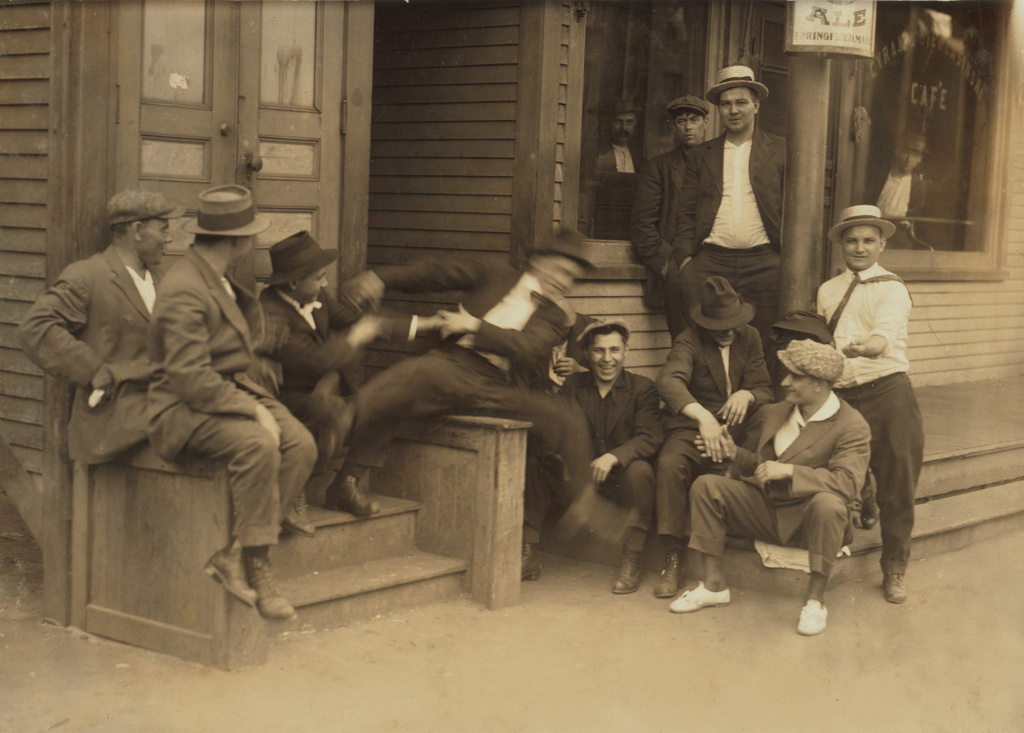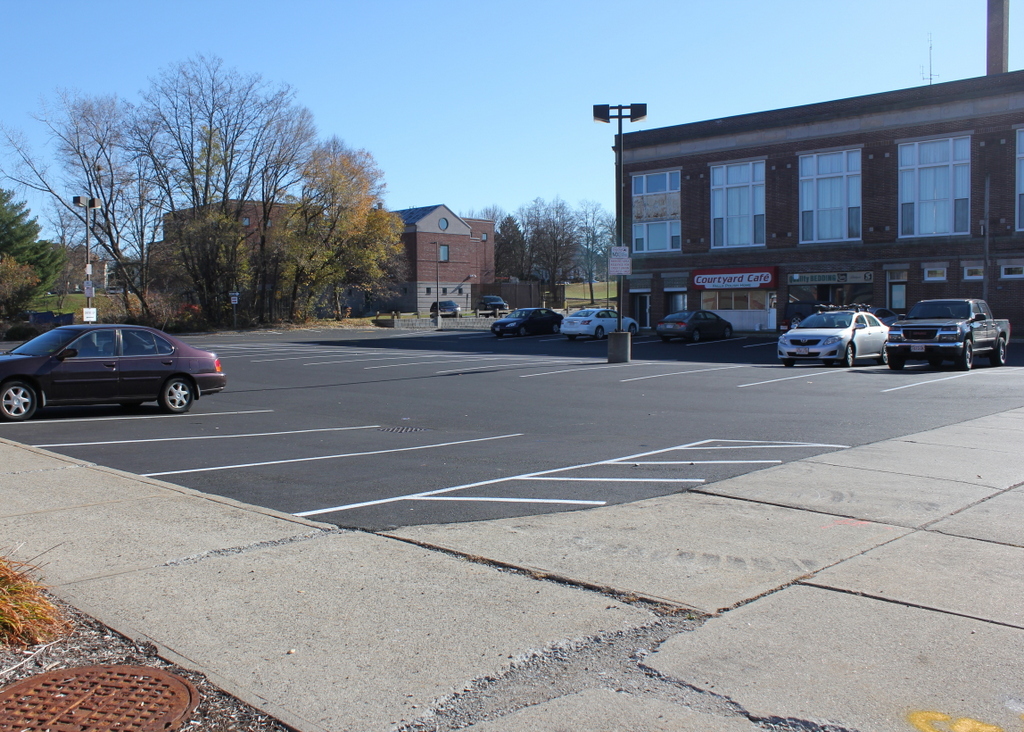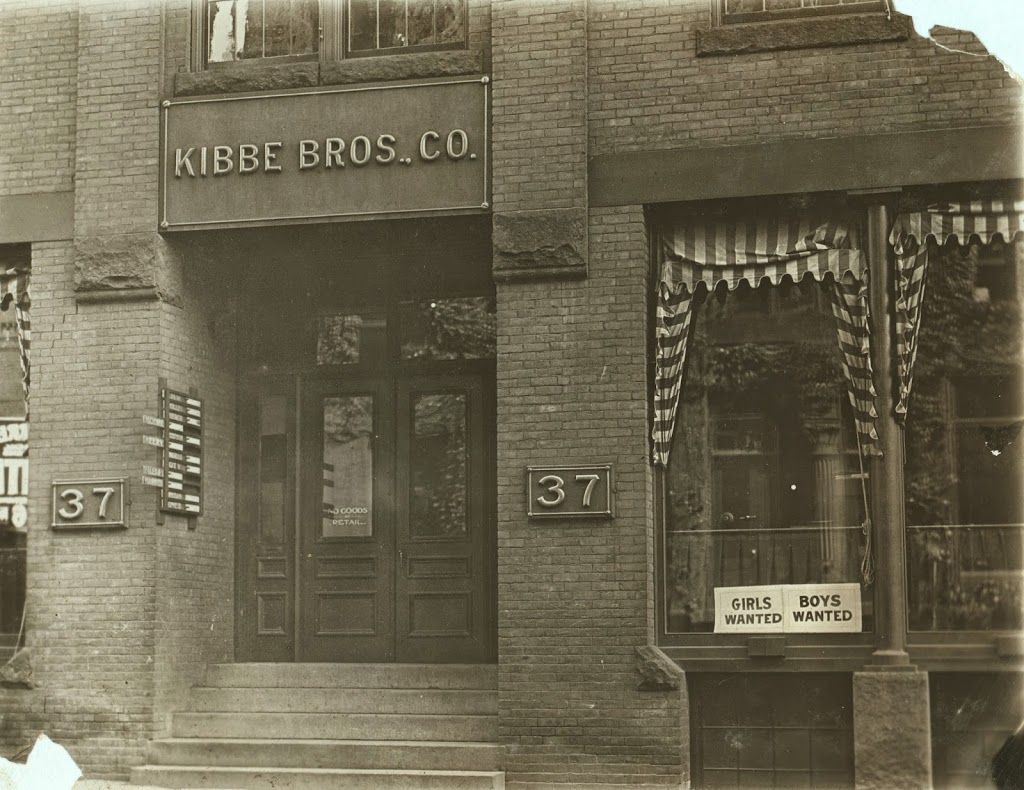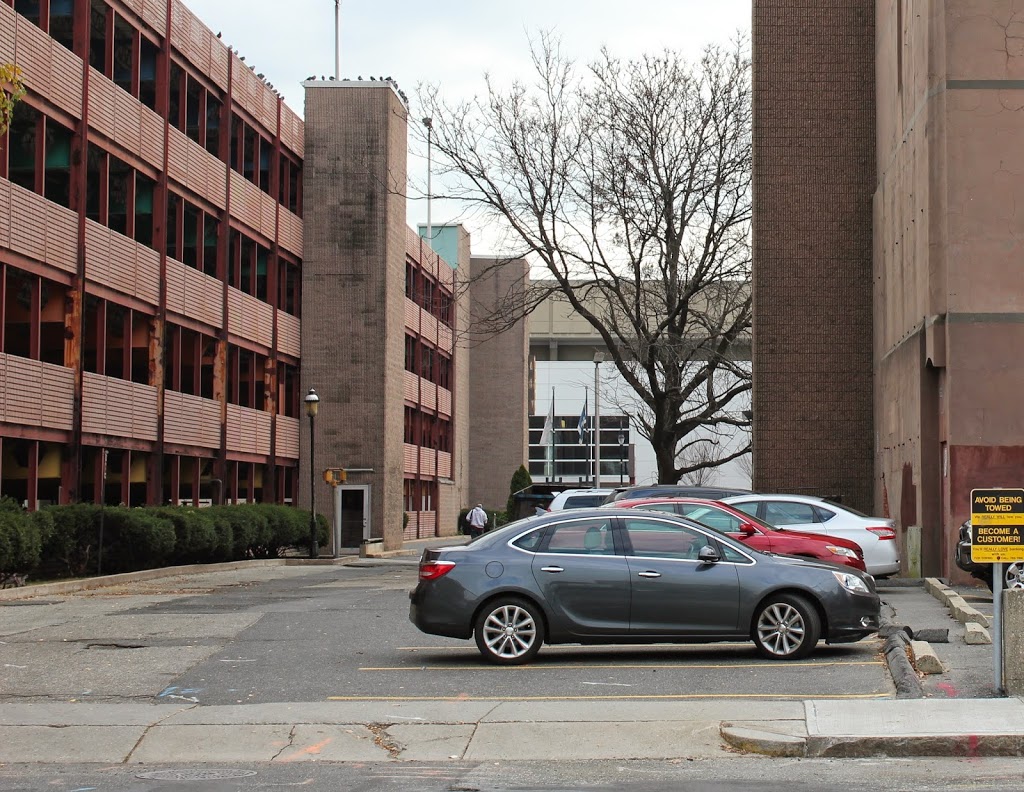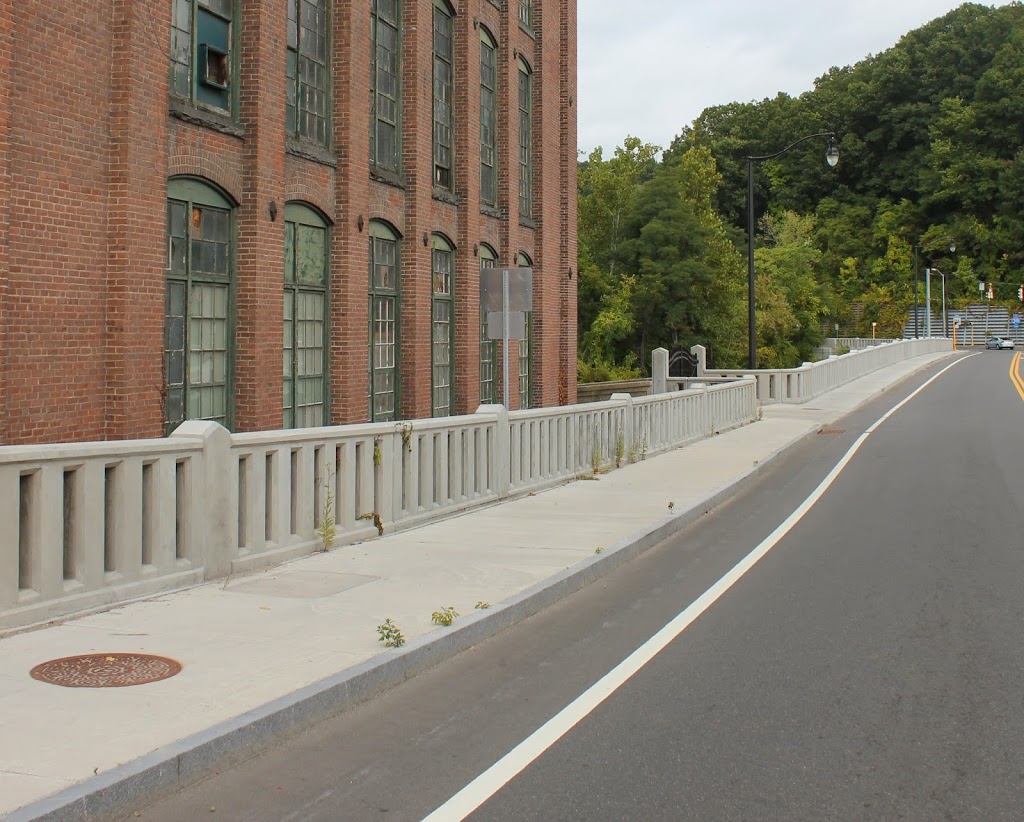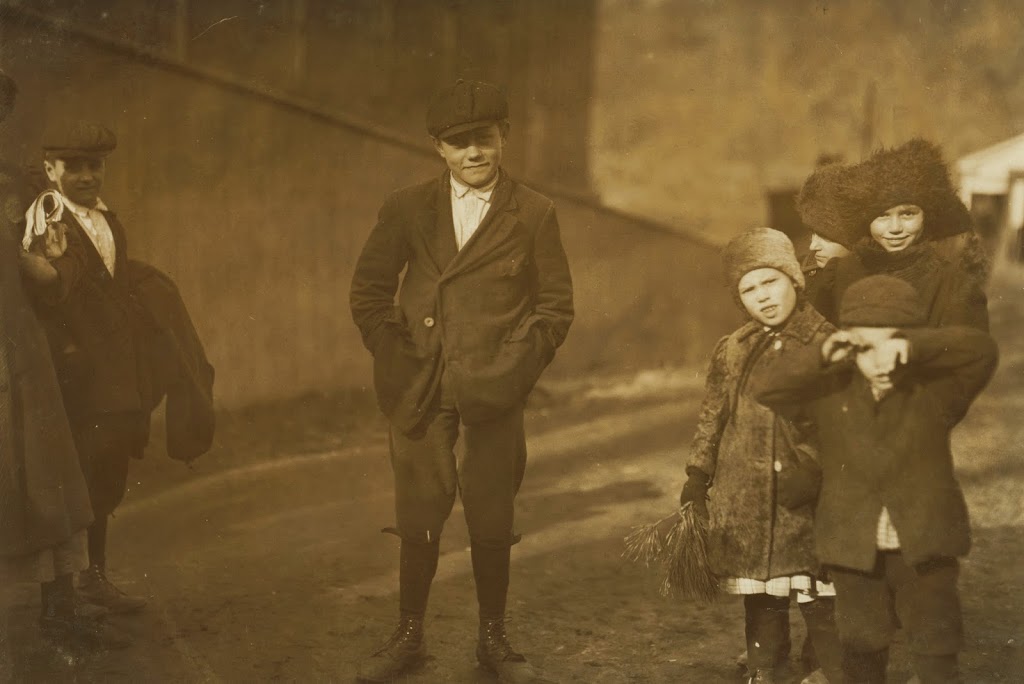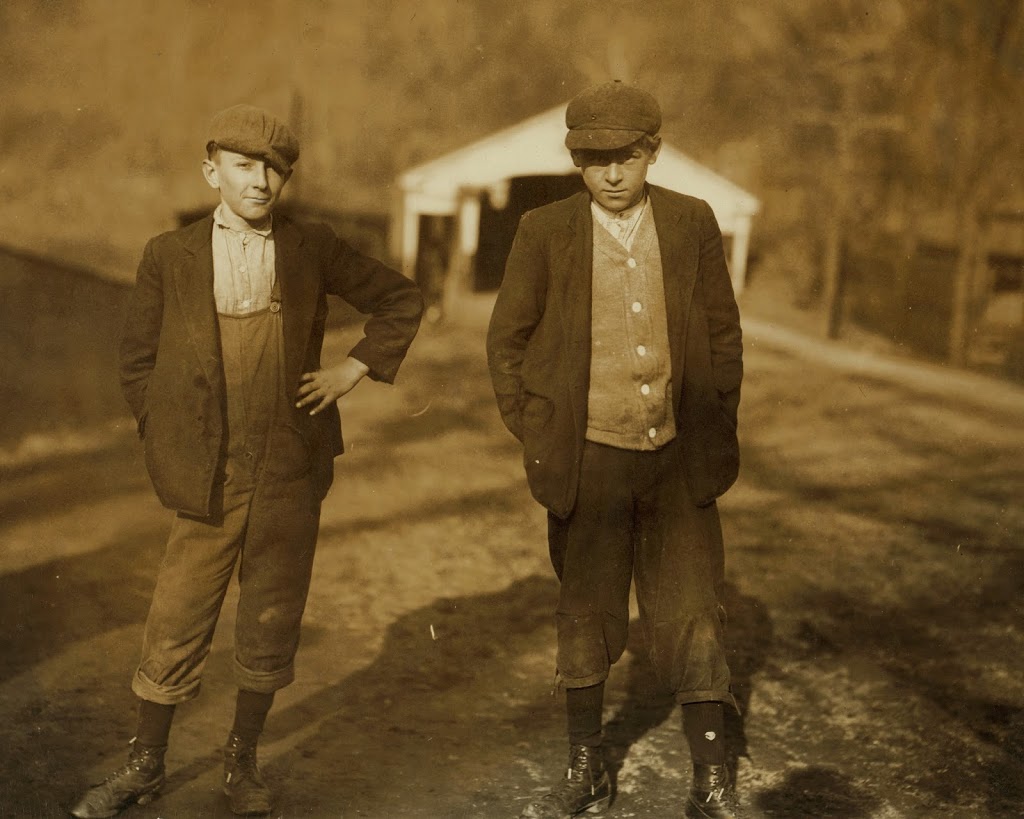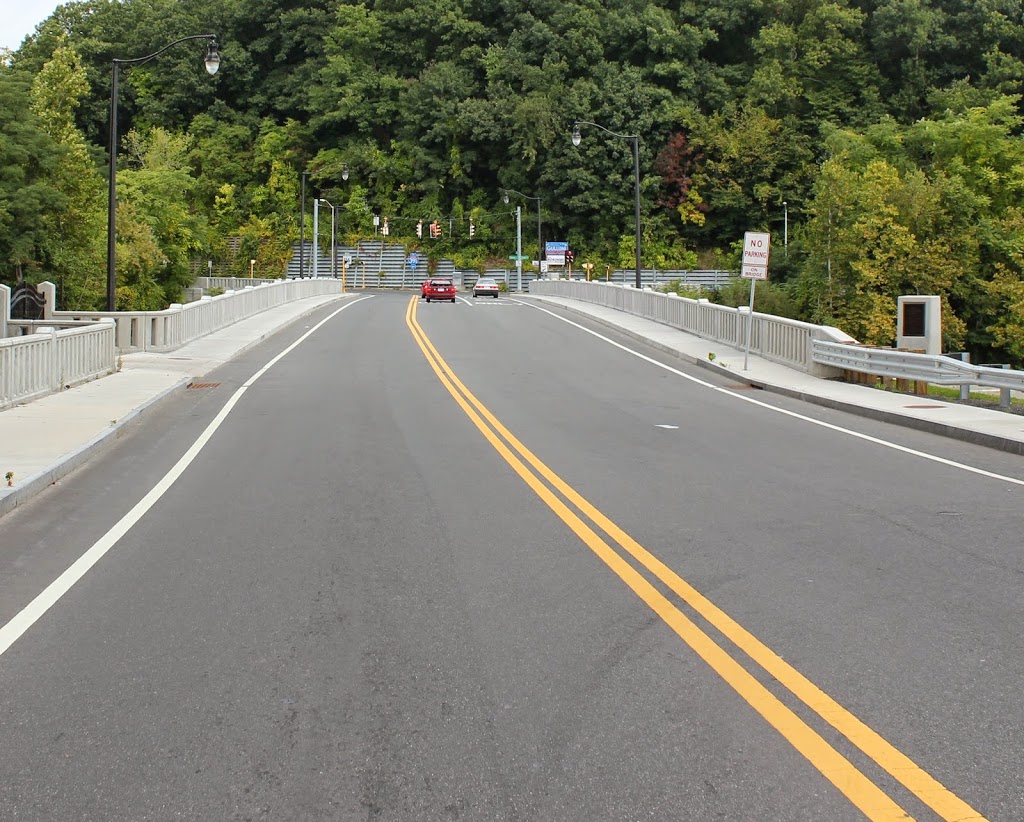Two workers pose outside of the Indian Orchard Manufacturing Company on Front Street in Indian Orchard, Springfield, Massachusetts, in September 1911. Image courtesy of the Library of Congress, National Child Labor Committee Collection.
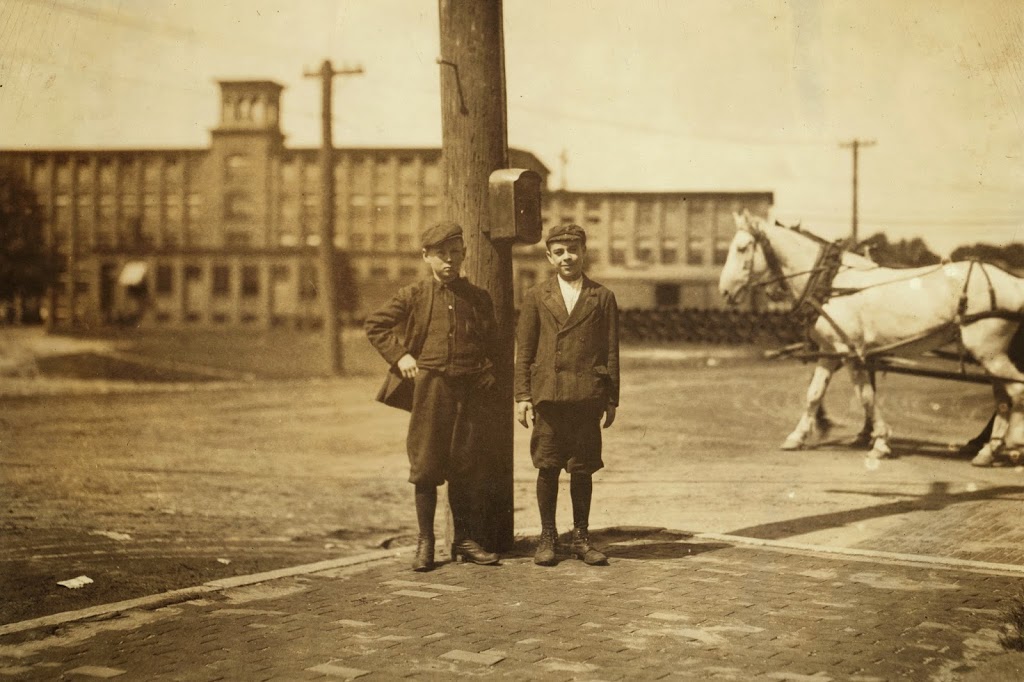
The same scene in 2014:
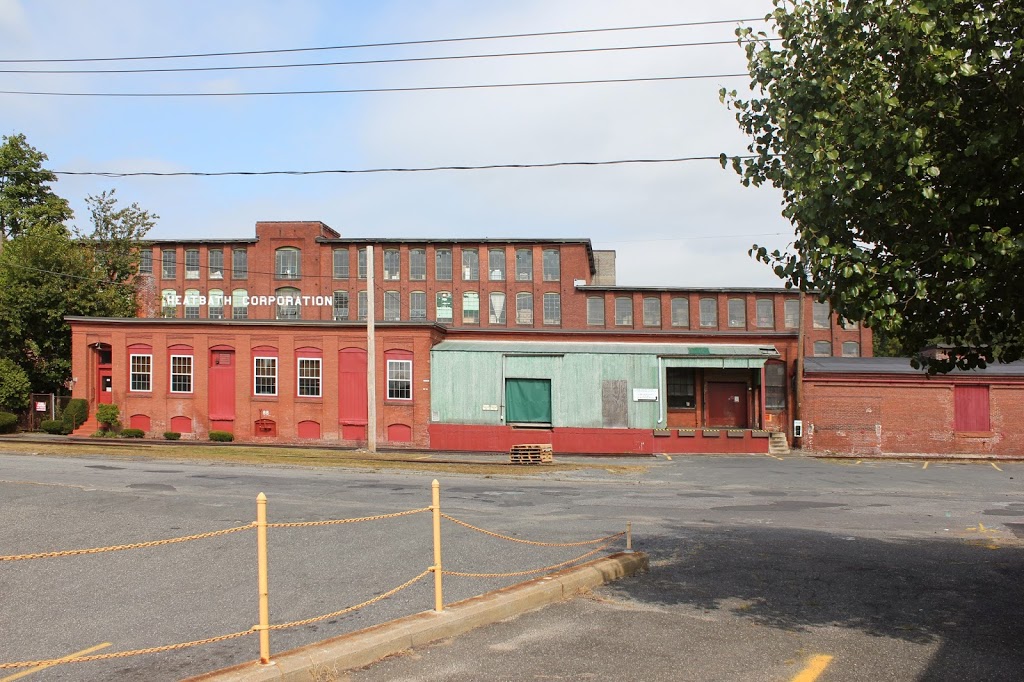
The Indian Orchard Manufacturing Company was once a major employer in this neighborhood of Springfield; it was strategically located along the fast-moving Chicopee River, which was a center of industrial development in 19th and early 20th century Massachusetts. It was also one of the places photographed by Lewis Wickes Hine as part of his efforts to document child labor practices in the country. Here, two boys pose across the street from the factory. According to Hine’s caption, they are:
“Alfred Gengreau, 20 Beaudry St., Joseph Miner, 15 Water St. Both work in Mr. Baker’s room. Indian Orchard Mill. Location: Indian Orchard, Massachusetts.”
I tried looking up genealogical information on both boys to see what became of them. I could not find any information about Gengreau, although based on his name, he was probably a French-Canadian immigrant. However, I was able to find some information about Miner. Based on what I was able to gather from census records and other public records, here is what I know about him:
He was born in 1897 to Joseph Sr. and Mary Miner; Joseph Sr. finished school after the second grade and, according to the 1910 census, could not read or write. They had one other child who had died sometime before the 1900 census, and by the 1910 census the three of them lived in a company-owned housing unit on Water Street, just a short distance to the right of where these photos were taken. In 1910, Joseph Sr. worked as a crane operator.
Joseph Jr., the one photographed above, was 14 when the photo was taken; according to his 1940 census, the highest grade that he completed was the 4th grade, which suggests he may have been working for some time before 1911. A few years later, he would serve in World War I. After the war, he married is wife Mabel, and they had two children: Eleanor, born in 1922, and Wallace, born in 1931. In 1930, Joseph and Mabel were still living in Springfield, paying $18 a month in rent, and Joseph was working as a mechanic. By 1940, however, their economic situation appears to have improved; Joseph was still employed as a mechanic, but they were listed on the census as being homeowners; their home at 461 Walnut Street in Springfield was valued at $2,500.
By the 1950s, the Springfield city directories indicate that Joseph and Mabel were living on Plumtree Road in Springfield, at the time a new suburban residential part of the city. Joseph’s occupation during this time was listed as a real estate broker. All things considered, it’s impressive – he grew up working as a child laborer in a factory, living in company housing, and eventually became a real estate broker who owned a home in a relatively upscale neighborhood.
Joseph died in 1964 at the age of 67, and Mabel died in 1975. She actually outlived her younger child, Wallace, who died in 1974 at 43 years old. Joseph and Mabel’s oldest child, Eleanor, died in Springfield in 2009. It’s likely (although I haven’t researched it) that Eleanor and Wallace had children who still live in the Springfield area, and if so, I’d love to hear from them and see what else they could tell me about the young 14 year old boy in the 1911 photo, because as I mentioned, just about everything I found out is through census records, which only give information on a small piece of a person’s life.

